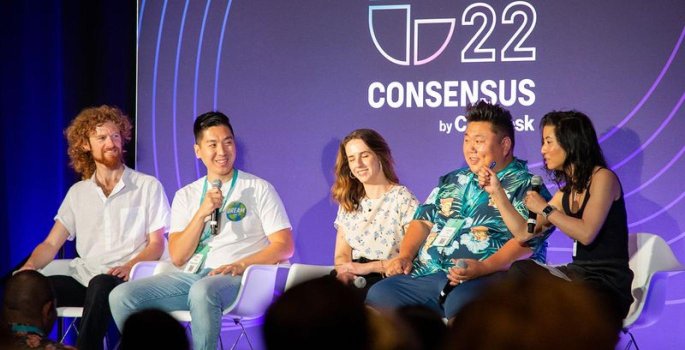What do a 3D TV and a Web3 avatar have in common? No one asked if anyone actually needed these things. While the 3D TV is no longer around, numerous Web3 projects continue to emerge, despite any proof that they actually have everyday utility. If you look at who is building the products of Web3 and whose needs those products serve, you start to realize that the builders look a lot like the same people who built Web2.
Tricia Wang is a tech ethnographer designing equity into systems. She co-founded Crypto Research and Design Lab (CRADL) with Sheila Warren and Lauren Serota. Web3athon is open for submission to anyone until August 7, 2022. Sign up here.
I’m a huge proponent of the idea that Web3 is for everyone, but we are on track to repeating Web2 where we had a small class of people building tools for everyone globally.
Web3 is supposed to pick up where Web2 failed
Many of the problems we had with Web2 came down to a lack of representation and participation by people building and using the tools, an infamous example being Google’s photo image recognition algorithm tagging Black people as gorillas. Web2 leaders designed and built in the direction that made them profitable (based around an extractive ad model) putting people’s needs and experiences second.
Despite mounting evidence that diverse teams can lead to better, more inclusive products, many of today’s Web3 builders are just Web2 builders with a hexagonal Twitter profile picture. But unlike Web2, it’s much easier for someone to start learning about Web3 and build a product that anyone can use. At least, in theory.
A key part of the Web3 promise is that the blockchain enables everyone to have sovereignty over their data, which is why Web3 is referred to as the “creator economy.”
That’s why in Web3 we need everyone to be a builder. Because when you control the use of your data (or your community’s data), you can do so much more with it. And being a builder doesn’t mean you have to write code (especially as we move towards a no to low-code Web3). It should also mean grokking the tech enough so that you can understand its use case scenarios and the larger environmental, social, policy and governance implications. But when so much of the Web3 dialog and headlines center around billionaires, scams and price volatility, it’s no wonder that some people may look at the industry and think “that’s not for me.”
Continue reading: https://www.nasdaq.com/articles/why-we-need-to-build-web3-differently
Tricia Wang is a tech ethnographer designing equity into systems. She co-founded Crypto Research and Design Lab (CRADL) with Sheila Warren and Lauren Serota. Web3athon is open for submission to anyone until August 7, 2022. Sign up here.
I’m a huge proponent of the idea that Web3 is for everyone, but we are on track to repeating Web2 where we had a small class of people building tools for everyone globally.
Web3 is supposed to pick up where Web2 failed
Many of the problems we had with Web2 came down to a lack of representation and participation by people building and using the tools, an infamous example being Google’s photo image recognition algorithm tagging Black people as gorillas. Web2 leaders designed and built in the direction that made them profitable (based around an extractive ad model) putting people’s needs and experiences second.
Despite mounting evidence that diverse teams can lead to better, more inclusive products, many of today’s Web3 builders are just Web2 builders with a hexagonal Twitter profile picture. But unlike Web2, it’s much easier for someone to start learning about Web3 and build a product that anyone can use. At least, in theory.
A key part of the Web3 promise is that the blockchain enables everyone to have sovereignty over their data, which is why Web3 is referred to as the “creator economy.”
That’s why in Web3 we need everyone to be a builder. Because when you control the use of your data (or your community’s data), you can do so much more with it. And being a builder doesn’t mean you have to write code (especially as we move towards a no to low-code Web3). It should also mean grokking the tech enough so that you can understand its use case scenarios and the larger environmental, social, policy and governance implications. But when so much of the Web3 dialog and headlines center around billionaires, scams and price volatility, it’s no wonder that some people may look at the industry and think “that’s not for me.”
Continue reading: https://www.nasdaq.com/articles/why-we-need-to-build-web3-differently

